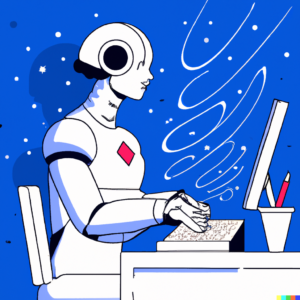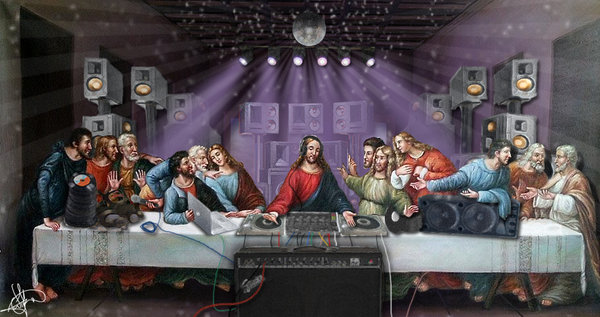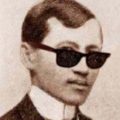
The field of artificial intelligence (AI) has experienced remarkable advancements in recent years. It has changed the way we live and work, and it has made it easier to complete complex tasks. However, as with any technology, there are concerns about its misuse. This paper will focus on two aspects of AI: its use to commit plagiarism and its ability to create art. Specifically, this article will explore the intersection of criminality and art in relation to AI.
Plagiarism is the act of using someone else’s work without proper attribution. In recent years, AI has been used to commit plagiarism by generating content that appears to be original but is actually copied from other sources. This is accomplished through the use of machine learning algorithms that can analyze large amounts of text and then generate new content based on that analysis.
One of the most well-known cases of AI-generated plagiarism occurred in 2019 when a graduate student named Zhang Yingyu used a program called GPT-2 to write an academic paper. The paper was accepted for publication, but when it was discovered that the paper was generated by a machine, the publication was rescinded.
The use of AI to commit plagiarism is a growing concern, and there are several reasons for this. First, it makes it easier to produce large amounts of content quickly, which can be especially tempting for individuals who are under pressure to meet deadlines. Second, it can be difficult to detect AI-generated content, as it can appear to be original. This can lead to a proliferation of plagiarized content, which can undermine the integrity of academic and professional fields.
AI has also been used to create art. This is accomplished through the use of generative algorithms that can produce images, music, and other forms of creative content. Some of the most impressive examples of AI-generated art include DeepDream, which produces dream-like images, and Aiva, which creates classical music.
While the use of AI in art is still in its infancy, there are concerns about its impact on the field. One concern is that AI-generated art could lead to a devaluation of human creativity. If machines can create art that is just as good as or better than that created by humans, it could undermine the value of human creativity.
Another concern is that AI-generated art could be used for criminal purposes, such as creating counterfeit art. If an AI-generated painting is indistinguishable from an original, it could be used to create forgeries that could be sold for large sums of money.
The use of AI to commit plagiarism and create art raises important ethical questions. While AI can be a valuable tool in many fields, it can also be misused for criminal purposes. It is important for individuals and organizations to be aware of these risks and take steps to mitigate them. Additionally, it is important for society to have discussions about the role of AI in art and other creative fields, and to consider the potential impacts of AI on human creativity.
~~~~
I have just committed a crime in advance. The previous essay was entirely AI generated. I asked Chat GPT “Can you write me a paper on the use of AI to commit plagiarism, as well as its ability to create art? It should focus specifically on the intersection of criminality and art,” and it obliged immediately. It took me around 15 seconds, and was extremely easy.
While there currently is no actual ruling against using AI in the SDSU rulebook, it is almost certain that it can be prosecuted. I certainly used another’s “ideas, words, or substance” without credit, and no amount of arguing that I provide the input would prevent my censure. There is no question that it’s a crime in some sense of the word. But is it art?
In most traditional forms of art, a creator makes something that presumably has a meaning, and the audience interprets it. In more modern art, a creator makes something that presumably has a meaning, and the audience’s interaction with it completes the art. How do you work with a piece of art generated entirely by an engine predicting the most likely next sentence, where the meaning is entirely generated by a mixture of an audience and a vast array of harvested data? In order to engage with AI art, you must either allow yourself to pretend that the art was made with intent by a person, or face your own ability to make meaning out of statistical patterns. With AI art growing more and more prevalent by the week, our society must either reconcile its own presumptions, or sink deeper into illusion. I wonder what it’ll be.
~~~
Author’s note: Don’t use Chat GPT for actual essays. Zhang Yingyu doesn’t exist and neither does his case study. DeepDream and Aiva are real, however. I recommend testing out several different AI programs to see how they act, it will make sorting AI essays from real ones much easier.
Title and Image generated by DALL E 2.








Another ethical dilemma with AI is how the models are trained. Machine learning algorithms, for example, Chat GPT, must be trained on something. This means that if the AI model is used to create art, it is fed great quantities of art from around the world, and its ability to create new art draws from past art. The issue, then, is that the artists whose work is used to train these models are not receiving credit or compensation. Furthermore, if your conception of art is “anything created with the intent to function as art,” there is a larger question about the intention behind AI’s output. It’s unclear whether you can actually claim AI has an intent beyond the user’s input. Is the output then art, since it is being generated by a human with the intent of creating art, or is there a necessary step involving labor that facilitates something being art? These are important questions to answer before the art community is overrun by AI.
As an artist myself, I personally believe that the use of AI art to generate ‘original’ combinations of images is alright AS LONG AS the original inspirations are cited. So far, it seems like the only difference between learning a particular style of drawing yourself through practice and study, and the use of AI to rehash that style into a new ‘original’ combination is the time and effort it takes to achieve each. Based on this, then I do not believe that one should be superior or inferior to the other, since the amount of time and effort do not dictate what is or is not ‘art.’ For both situations, artists with common decency should cite their inspirations for their piece, which would loosen up the fear of plagiarism. I agree with the article that authors or artists using AI without citations would be in the moral wrong however, since by not doing so they claim the entire idea/style for their own which isn’t what happened.